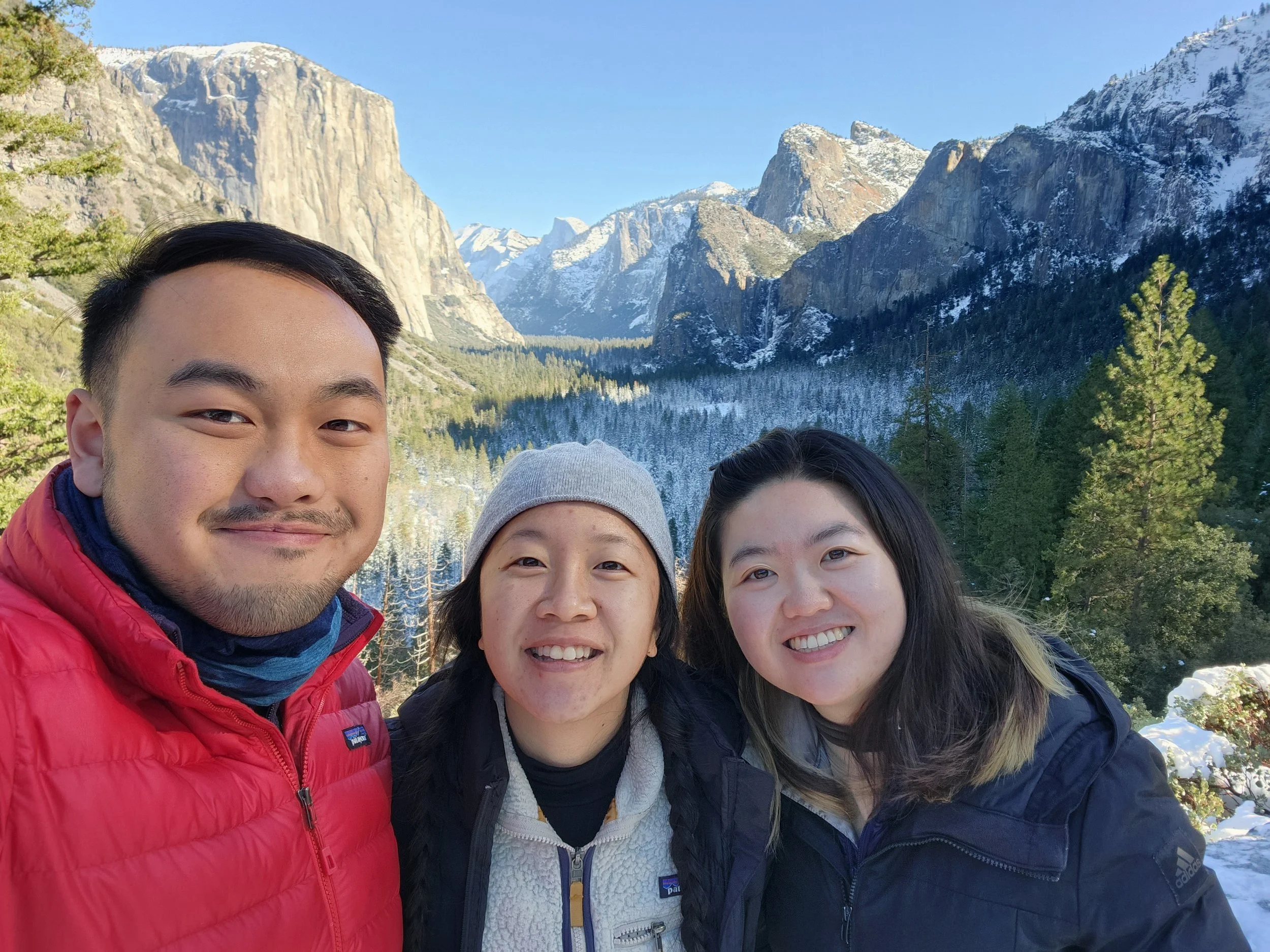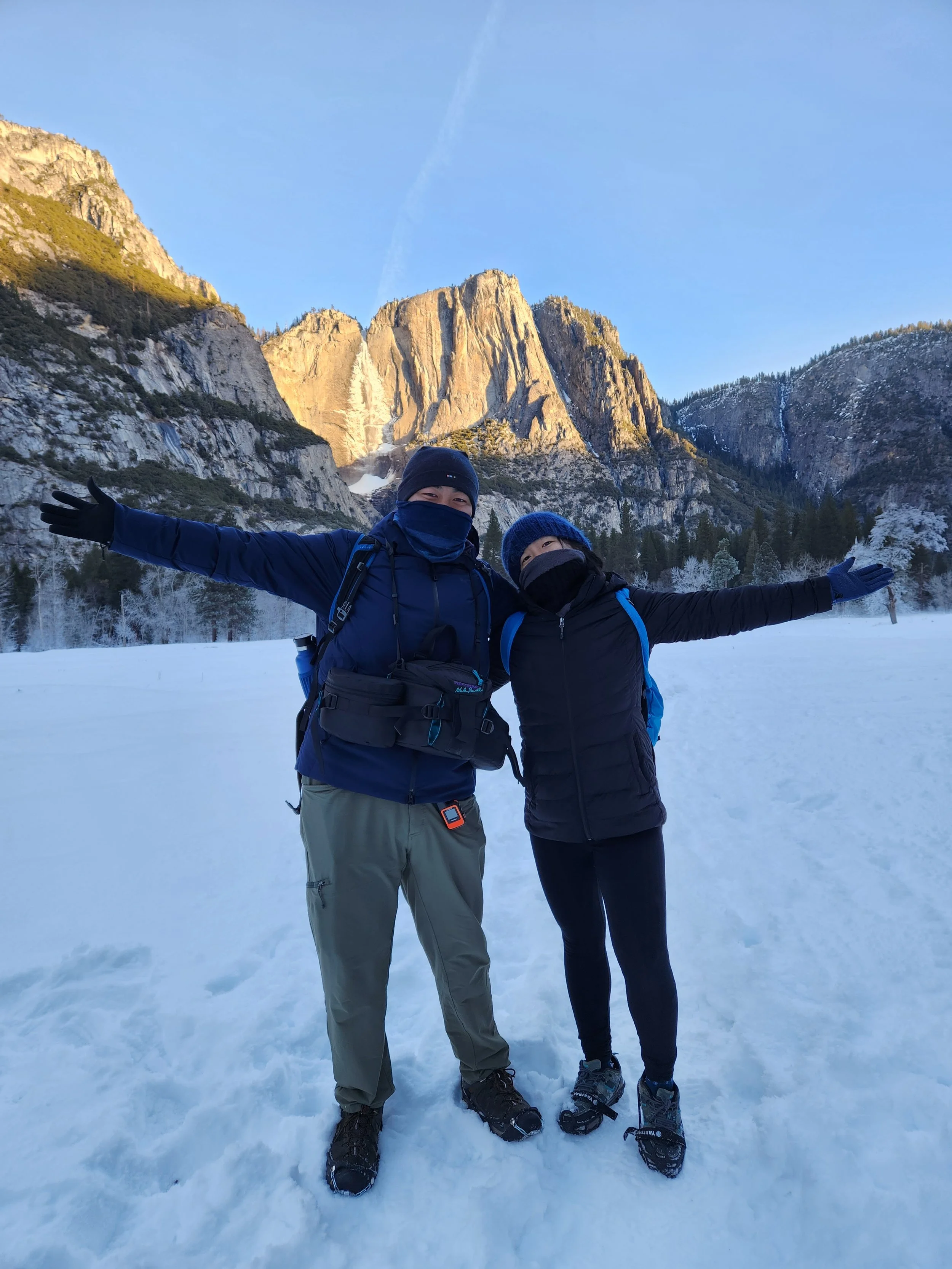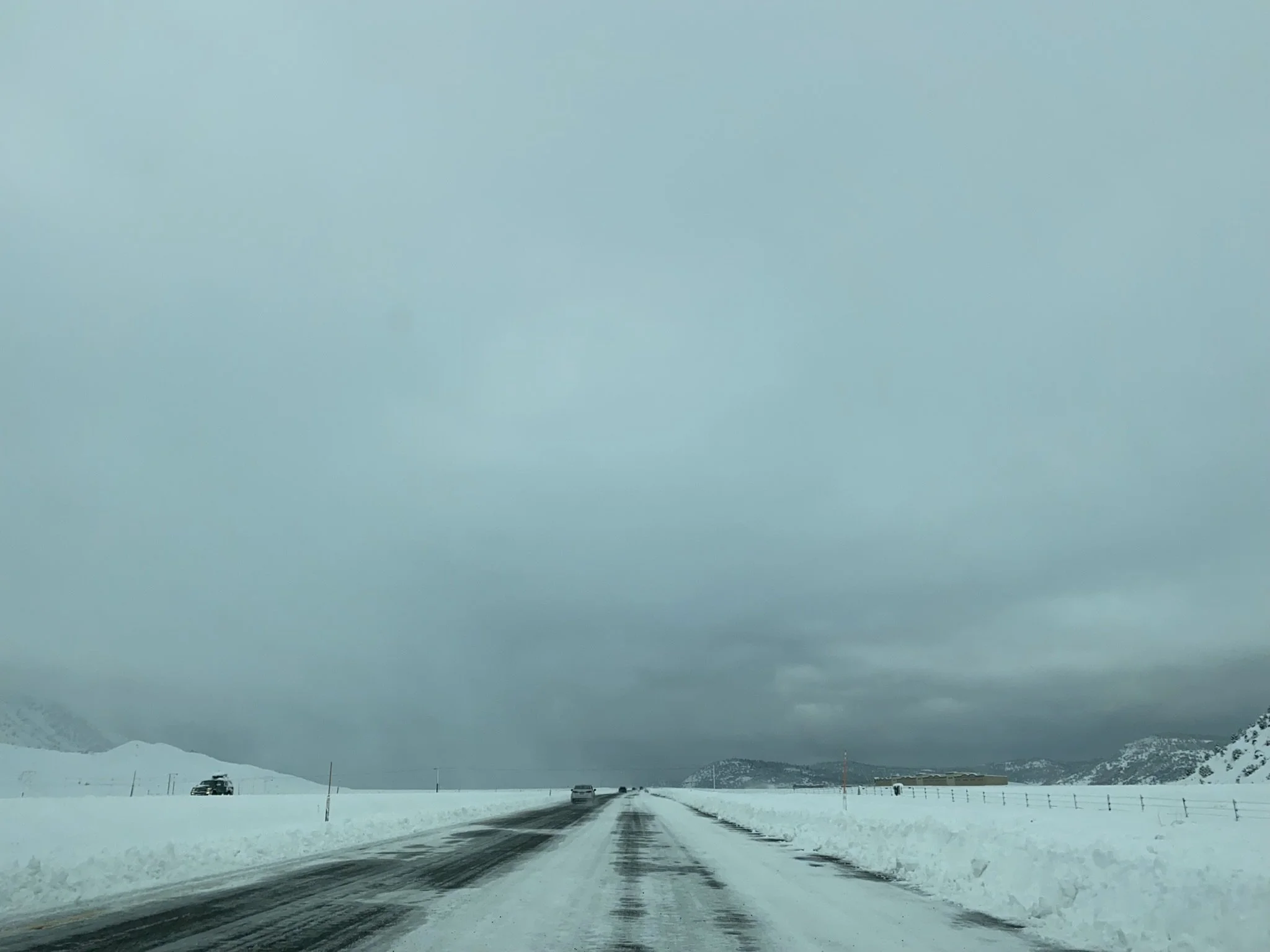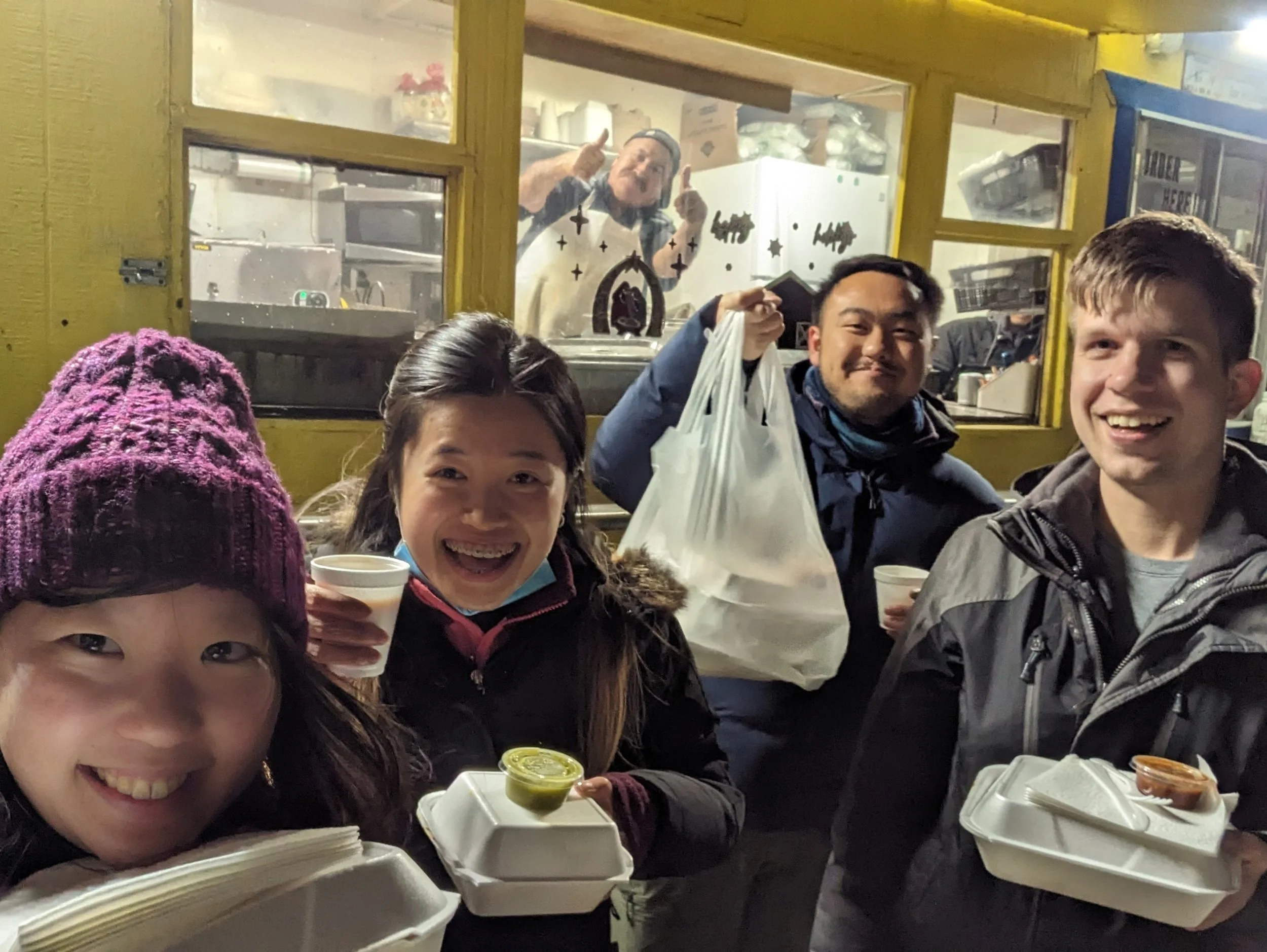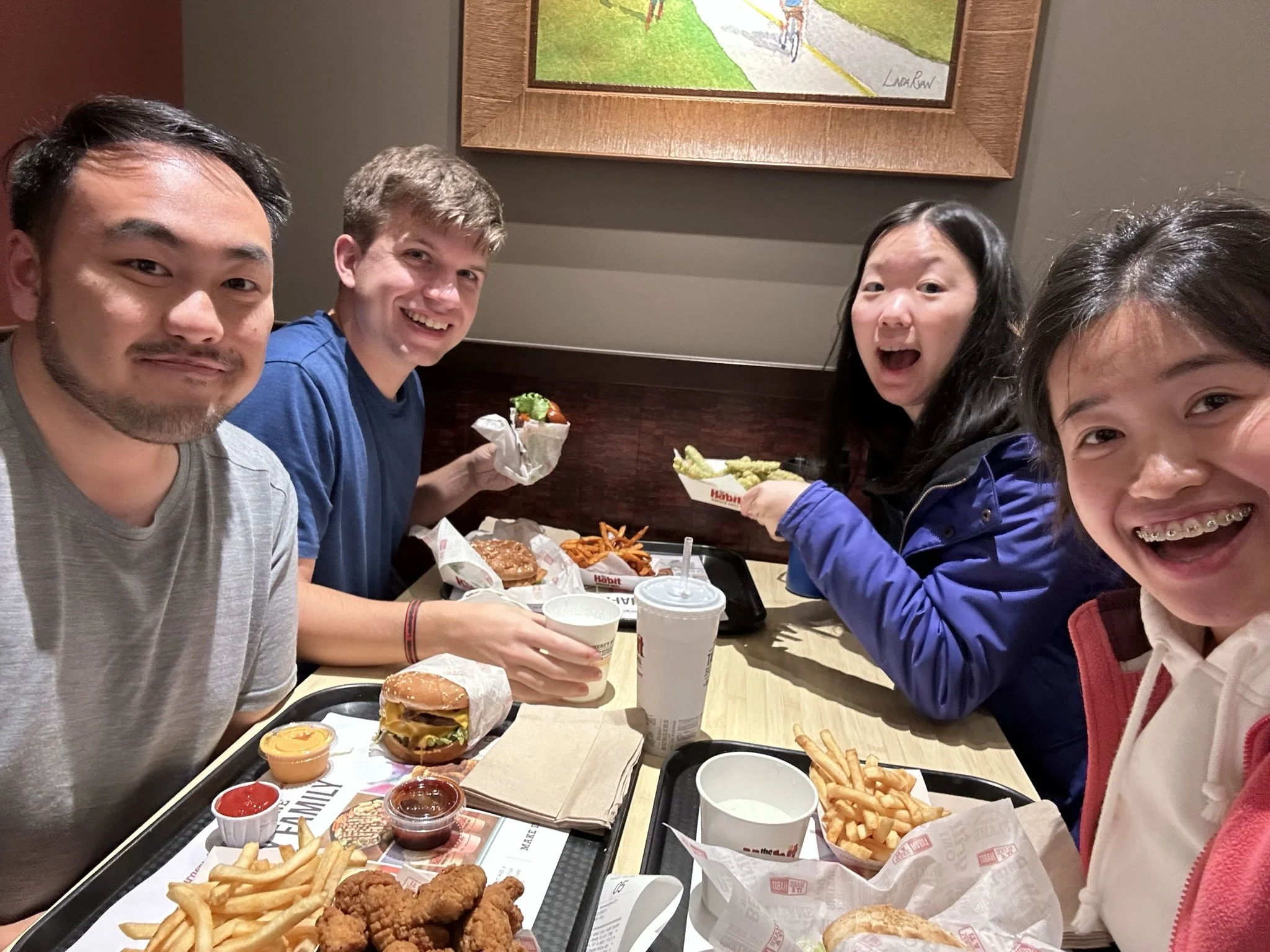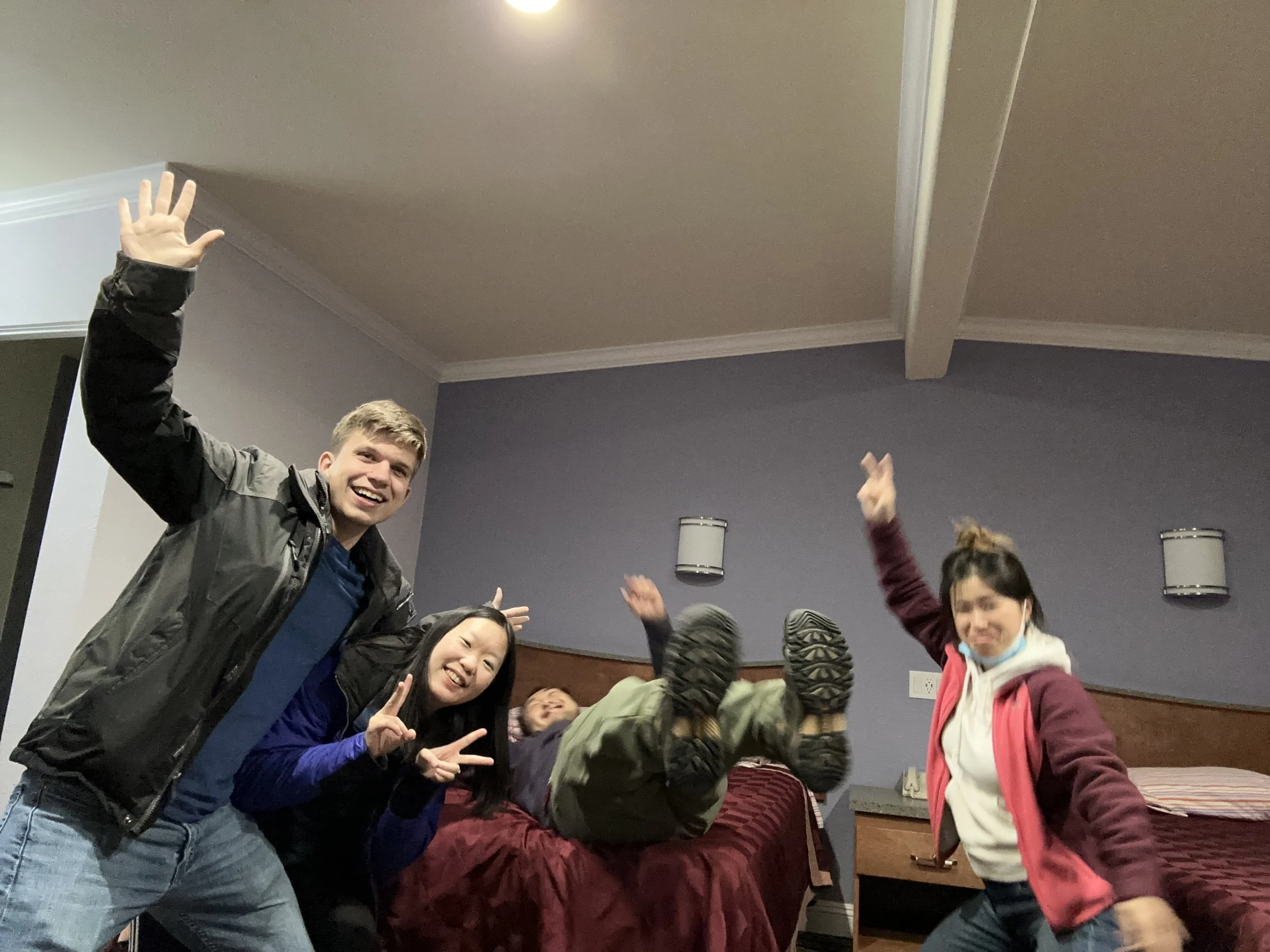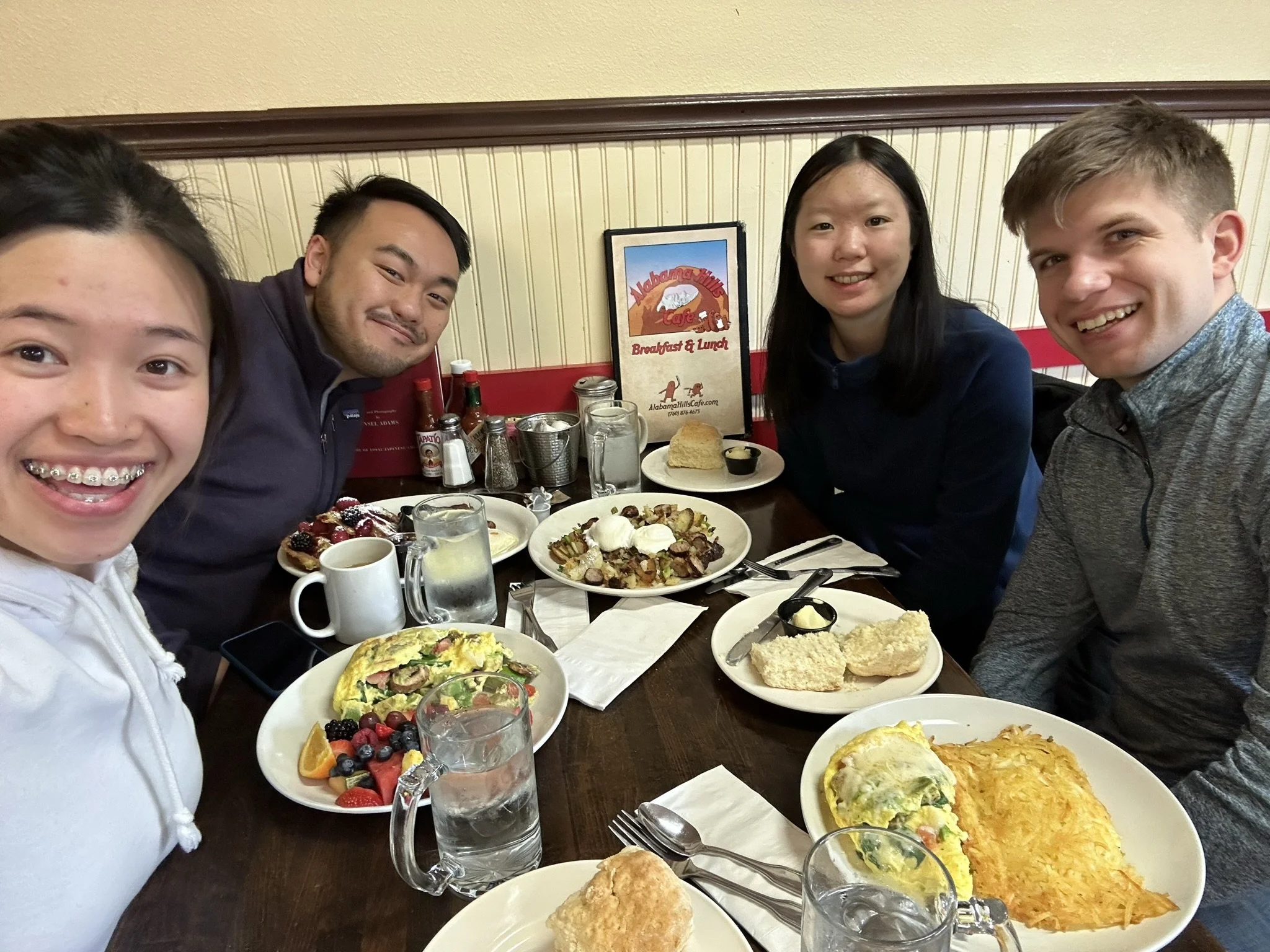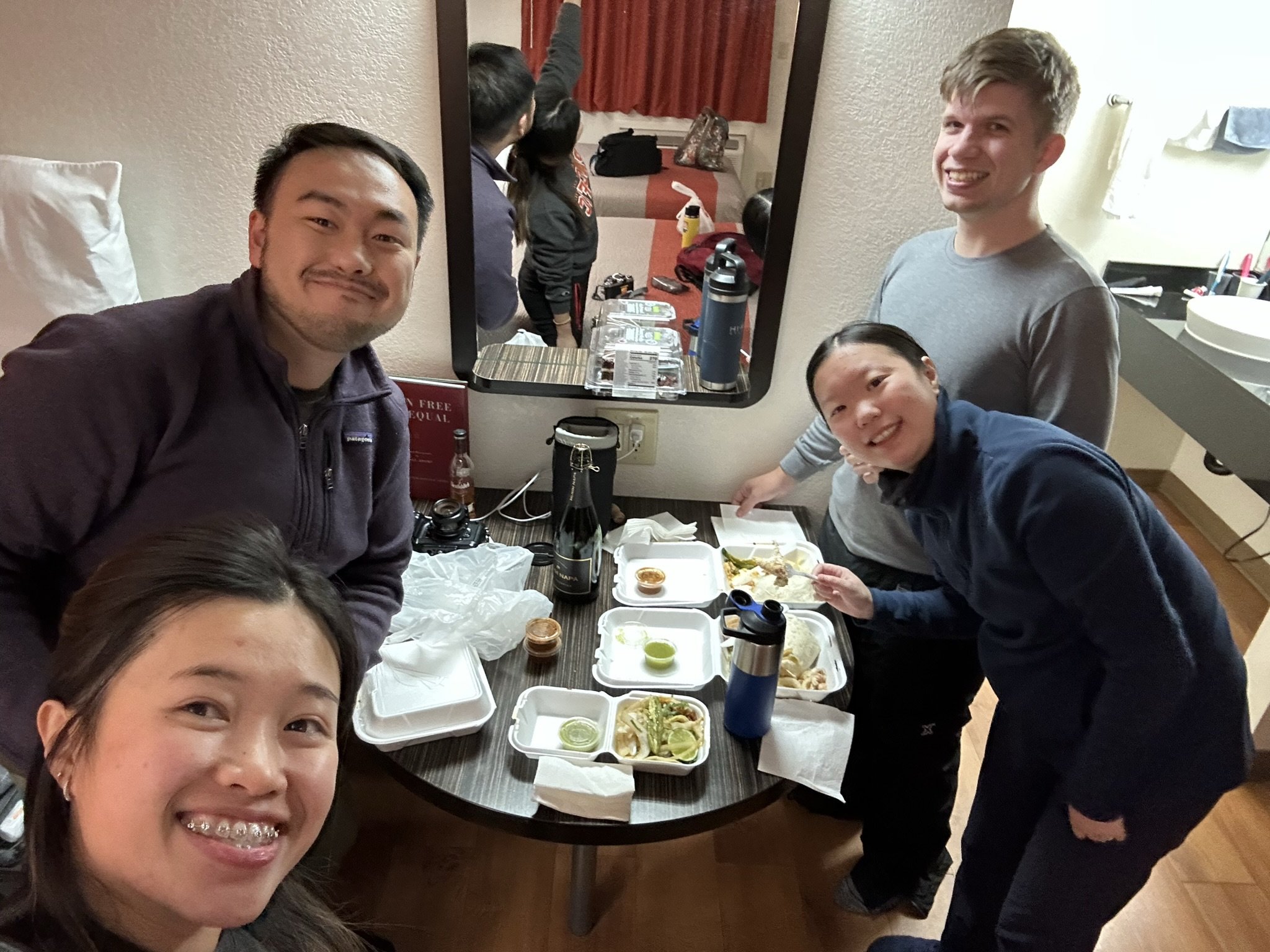Atmospheric Rivers and Taco Runs
I don’t know about you, but I get nervous inviting people to my house. I worry about how clean the floors are or whether I’ll have enough drinks for everyone. I also feel the same way about introducing friends to places I enjoy visiting.
I have written before about how much I love Yosemite and the Eastern Sierra and how I’ve visited those places so many times that they have become a second home for me. I have seen and photographed these places in some truly spectacular conditions.
Last December, I had the opportunity to introduce some friends to those two areas. I saw the two trips I took as a chance to enjoy the company of friends, with the potential bonus of creating a few memorable photographs along the way. But I also worried that their experience might fall short of the expectations I had set from my photos and stories. Though I had become accustomed to the unpredictability of chasing picture-perfect conditions on my own time, I worried that anything short of extraordinary conditions shown in my photographs would disappoint the people traveling with me. These two trips put those fears to rest and reminded me that the lessons I learned this summer on my solo trips about appreciating imperfect conditions applied equally to traveling with others.
Part I: Yosemite
My girlfriend Emily and I wanted to visit Yosemite and we invited our friend Hoyun to join us. Hoyun had never visited the park in her years living in California, so Emily and I decided that this trip would be the perfect opportunity to fix that. Luckily for us, we timed our visit right after an atmospheric river event dumped snow across the entire Sierra Nevada range. Yosemite Valley was blanketed with a layer of fine, powdery snow during the entire weekend.
Unfortunately, the trip also coincided with the World Cup Final. Ultimately I decided that I could miss a sunrise, but I couldn’t miss a World Cup Final. We woke up at 6:45 AM to watch Argentina beat France in an emotional seesaw of a game and cement Lionel Messi’s status as the Greatest of All Time. After our pulses returned to normal, we entered the park and visited all the highlights: Tunnel View, Lower Yosemite Falls, and Gates of the Valley.
We stopped at the last destination, Gates of the Valley, for sunset. As the shadows grew longer, a layer of fog began to form on the valley floor. Then it disappeared and reformed again several times. I had never seen such dynamic conditions here before. Now that I had some time to settle on what to photograph, I went to work. I had noticed mounds of pristine snow crystals accumulated on the rocks in the river. Now that El Capitan started to reflect the last light of the day, I framed both of those elements together.
Unfortunately, my other composition, a horizontal wide angle of El Capitan and Bridalveil Fall, did not turn out well. I had accidentally fumbled the filter placement while switching lenses and missed the best light. Though I was temporarily frustrated by that setback, my disappointment at missing the second shot diminished when I realized Emily and Hoyun had enjoyed every moment of sunset.
We spent the most of the next two days focused mainly on non-photographic activities. Though I still managed to capture a few images, I kept my camera stowed away for much of that time. We visited the Yosemite Chapel, the Ansel Adams Gallery, Swinging Bridge, and even found time to visit my good friend Blake.
For our last stop of the trip, I brought us to one of my favorite spots along the Merced River. Here, Half Dome reflects off the water’s surface, perfect for sunset. We arrived from just in time for the light to change. I had photographed here many times before. Most of those times, I had encountered unfavorable weather conditions. This time the conditions lined up nicely. A few wisps of clouds behind Half Dome helped reflect some sunset light. The river’s surface laid still enough to show a clear reflection.
We soaked up the scene as the alpenglow on Half Dome grew warmer and warmer, until it dimmed and then faded just as quickly as it had appeared. It felt like a fitting conclusion to the trip. We drove back home satisfied with a weekend well spent.
Part II: Eastern Sierra
Two weeks later, I ventured back into the snowy Sierra with a different group of friends: Tiff, Erica, and her husband Ben. Initially we planned to visit Yosemite in what would be my second trip of the month. Ben had never visited the park either, and I welcomed the opportunity to show another friend around the valley. That plan changed just a few days prior to our departure.
We had inadvertently scheduled our trip right in the middle of a particularly intense three week period in which nine atmospheric river events dumped eighty percent of a full season’s snowpack onto California. One of those storms coincided with New Year’s weekend. My Californian instincts appreciated the much-needed precipitation (and of course, the photographer in me gleefully hoped for some dramatic weather conditions), but the storms wrought havoc on our travel plans. Yosemite Valley, a mere 4,000 feet above sea level, would only receive rain, not snow. Since I didn’t want Ben’s first trip to Yosemite to be a soggy and miserable experience, I suggested we detour to the eastern Sierra, parts of which would almost certainly be blanketed with snow. The rest of the group had never visited before, so it would be an entirely new experience. Everyone agreed and we hastily rebooked our accommodations.
We had to detour south through Bakersfield and Tehachapi to avoid the worst of the storm. This itinerary set us up nicely to the Alabama Hills area, series of rock formations just outside the town of Lone Pine, where we stayed that first night.
Despite arriving late in the evening, I managed to convince the rest of the group to wake up for an early sunrise hike to Mobius Arch in the Alabama Hills. At dawn the storm broke just enough for us to briefly see the sun, which lit up the storm clouds and even provided us with a rainbow.
After some much needed breakfast, we drove north to visit Manzanar National Historic Site. During World War II, the US government forcibly relocated over 110,000 Japanese-Americans into concentration camps spread out across the United States. Manzanar was one of two such camps in California. Though I had visited before, it was still a sobering and humbling experience—a reminder of a dark chapter in our history we ought not forget. The weather seemed to match the occasion—rain continued to pour down during most of our visit.
We woke up early for sunrise again on the next day, but thick clouds precluded any possibility of good light that morning. Instead, we dedicated the morning to exploring Bishop and Mammoth Lakes. I drove us to a farmer’s pond on the outskirts of Bishop. I had learned of this body of water almost two years ago and wanted to create a photograph there, but at the time the pond had dried up.
This time, thanks to a few weeks of sustained rain, the formerly dry lakebed once again held water. I walked around, snapped a few scouting shots on my phone, and drove us back out to the main highway. I knew I wanted to return for tomorrow’s sunrise.
The weather began to clear on our drive up to Mammoth. I sensed an opportunity for a shot, pulled off Highway 395, and stopped the car on a side road. Here we saw a stream of clouds peeking over Wheeler Crest. A row of trees far into the distance lent a sense of scale to the peaks behind them. I mounted a telephoto lens onto my camera and began searching for the right framing.
Once we hustled back into the car and drove up Sherwin Grade, about 2,400 feet above the Owens Valley, we encountered an entirely different world. A thick blanket of snow covered everything as far as the eye could see. Up here the weather had not completely cleared, and it felt as if we were driving directly into a snowstorm, which of course, we were. Despite the gloomy weather, we managed to find something to do. We drove around Mammoth, looking in amazement at the incomprehensible amount of snow all over the area. We even stopped by a nice looking slope and found a good use for the sleds we brought along. That afternoon, we learned just how difficult it is to not fall off a sled going full speed down a hill.
To top it all off, we ended the evening with some amazing tacos (if you’re ever in Bishop, check out Taqueria Mi Guadalajara).
After full day of hiking and sledding, the sunrise wake-up time the next morning proved a bridge too far for our sleep deprived group. Undeterred, I ventured out to the yesterday’s pond by myself and waited for sunrise to begin. I wandered around the brush looking for a way to frame all the elements together. My yawns were punctuated by doubts about whether the light would materialize that morning.
I shivered from the cold winds, which buffeted the lake with ripples. My heart raced as I waited excitedly for the sun to come up. It began with a soft glow above the Sierra. The sky turned from blue to pink and the light gradually intensified.
Then the clouds began to glow. Within a minute or two, the mountains too began to catch the first rays of direct light. I snapped a few shots and marveled at my luck. In another twist of good fortune, the wind had died down and the surface of the water evened out to reveal a vibrant reflection of the Sierra peaks.
Later in the morning, I drove back to our hotel and excitedly told everyone about the spectacular sunrise that morning and showed them some snapshots on my phone. There was a certain degree of dramatic irony in that the best sunrise of the trip occurred on the morning that everyone else decided to sleep in, a realization which prompted Tiff to exclaim, “We slept in for the best one??” Thankfully breakfast, coffee, and a visit to Erick Schat's Bakkery eased the pain of having missed out.
After a morning spent walking around Bishop one last time, it was time to drive home. But first, we decided to stop by Mono Lake along the way. On the way there I had enthusiastically expounded on the history of Mono Lake and the natural processes that led to the formation of the iconic limestone tufa towers along its shore. Then, in an unfortunate twist, the anticipation turned into disappointment. We arrived at the intersection for the South Tufa area only to discover the road blocked by snow. We could see the shore from our car; it seemed just within reach. We attempted to gently drive onto the snow, only to find that even four-wheel-drive had met its match. Nevertheless, we weren’t too disappointed. The snowy landscape all around us more than made up for the setback.
With this final stop unavailable to us, we focused on the drive back. The weather forecasts for Bishop that day predicted clear skies, which led me to assume that we would enjoy an easy day of driving. Unfortunately, that was not the case. Unbeknownst to us, another storm was due to roll in that evening. The weather worsened as we drove further north. Eventually we hit long lines of traffic near Lake Tahoe, roughly halfway through our return journey. Soon the traffic worsened, and as day turned into night the snow intensified. We soon found ourselves stuck on Interstate 80, completely stopped, watching scores of cold, miserable drivers attempt to put tire chains in the snow.
None of us had encountered conditions like this before. I drove gingerly through the snow, eager to avoid skidding into a snowbank. We blasted Taylor Swift and some Broadway musicals to keep us entertained. Slowly but surely the traffic slowly eased up, and snow turned into rain. By the time we arrived back home, three hours later than anticipated, we had spent a full twelve hours on the road. We were dead tired, but at least we had heck of a story to show for it.
From a photographic standpoint, the trips were moderately successful. I snagged a few portfolio-worthy pictures, but fewer than I normally would have on similar trips by myself. The real value came from the shared joy of visiting Yosemite and the eastside with my friends. In hindsight, my fears were misplaced. We had a great time even when the conditions weren’t ideal. The excitement of visiting a new place (or a familiar one for me) with good friends mattered far more than whether the weather was picture perfect.
The tacos didn’t hurt either.

